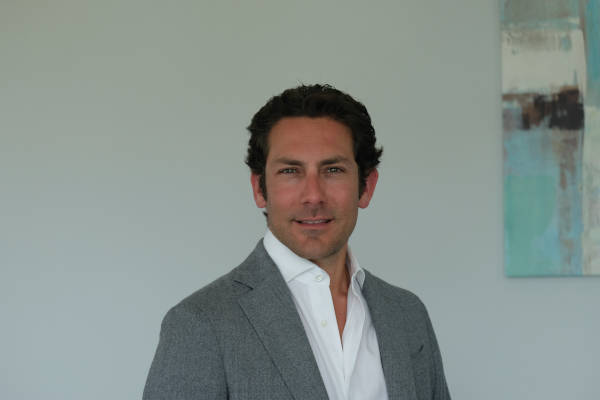
The original cryptocurrency, Bitcoin, and its blockchain ledger are more than a decade old. Yet even as established institutions have deliberately made their way into the asset class and tested the underlying technology, full-fledged, mainstream acceptance remains elusive.
This is not to say that Bitcoin and other alternatives are complete ciphers - well-timed investments have yielded a few fortunes - or that blockchain-based business propositions can't be viable, as Intercontinental Exchange, Fidelity Investments, Digital Currency Group, Galaxy Digital and numerous others place substantial and often multifaceted strategic bets.

Count XBTO Group in that category of emerging and growing digital-asset market leaders - none of them born yesterday or assembled haphazardly. It was founded in 2015, its home page opening with the words “Trusted Cryptofinance,” which communicates what the company aspires to deliver, as well as a hurdle that the marketplace must clear on its way to maturity.
XBTO addresses the challenges of the vast crypto-market ecosystem with what its founder and CEO, Philippe Bekhazi, describes as a “micro ecosystem” of its own, with separate-and-synergistic business units focused on trading, asset management, a venture capital portfolio, crypto mining, consulting and emerging projects. “To accelerate the social benefits of cryptocurrency,” according to the vision statement, “we innovate and create 'Trusted Cryptofinance' that gives comfort to market participants.”
Bekhazi, whose experience with digital currency predated his founding of XBTO (alongside chief investment officer Walton Comer and chief technology officer Richad Idris), is a Syracuse University graduate (B.S. with honors in finance and communications) with a trading, portfolio management and risk management solutions background. He has worked for Citi, Calypso Technology and, during four years with SAC Capital Advisors, helped build the global macro desk.
Bekhazi discussed XBTO's origins and evolution, and the path toward trusted cryptofinance, in this recent GARP Risk Intelligence interview.
You were personally active with Bitcoin for a few years before starting XBTO. What was the spark for forming the company?
I spent a number of years assessing my core strengths to figure out any competitive advantage I may have, and what I could really bring to the Bitcoin ecosystem. My professional background in macro trading and risk management, coupled with my personal affinity to technology, meant that exploring Bitcoin was the perfect marriage for me. After meeting local exchanges in New York, I decided to help them with their business models and started applying some of our FX-designed algos to Bitcoin to essentially become a much-needed liquidity provider at the onset of the industry.
What was the early vision, and to what extent did that change or course-correct?
The early vision was simply to make crypto more liquid, as crypto without liquidity has no value. In that line of business, nothing has really changed except for our risk management practices. What did change and evolve was the onset and development of new business lines, which today makes us one of the most diverse players across cryptofinance.
Was it important for you to be differentiated from other players in a crowded field?
At the time there were no real competitors; we were true pioneers, and the pie was growing so fast (it still is) that nobody really worried about competitors. It was more about being in at the ground floor and helping to propel a burgeoning industry. Now, as the industry has matured, differentiation is starting to become more important.
How do the several parts of XBTO fit together? Is the sum greater than the individual parts? How are synergies created?
Our brand, human capital and technology can be and are leveraged to assist all the vertical businesses. Mining stands on its own but is important in understanding what miners need or want at any given time. Also, we feel like being a part of the mining community (or staking and validating) is critical to the ecosystem. One clear example of synergistic interplay among business lines is how many of our VC investments are born out of our trading arm, whereby we both identify a need and then provide seed capital and are also able to help a company scale up through our technology and trading and market-making muscle.
What does “ecosystem” mean to you? Is XBTO one?
The ecosystem is basically how all the parts of crypto work together, from the users, to the developers, to the traders, to the exchanges, to the miners, to the merchants and ultimately to the end-user. XBTO is a micro ecosystem in a way, given the role we play in facilitating many facets of this journey.
What is the vision of the venture investing part of the business? How is it differentiated from that of other investors? What is the status of that ecosystem?
The venture investing arm of XBTO is strategic, and we take advantage of the knowledge garnered through our various business lines to guide investments. We are markedly different than typical VCs in that regard and are more hands-on in aiding our portfolio companies.
Due to the tremendous success and track record of our proprietary VC investments (Fund I), we launched Fund II - XBTO Humla Ventures - which is overseen by our head of VC and fund partner Greg Carson. Fund II is now open to outside LPs with a target raise of $80 million. Based on our proven philosophy of investing in the “rails” and Layer 2 blockchain, the ecosystem we envisioned is thriving and starting to come to fruition.
Can you mention a couple of highlights or “stars” worth watching in the VC portfolio?
There are many highlights, but here are two:
- Deribit, which has clearly emerged as the leading futures and options exchange for crypto, and continues to hit volume records and introduce new options and solutions for traders. They recently surpassed $4 billion in monthly options volume traded, as an example of one milestone
- X-Margin, which enables derivatives trading across multiple counterparties, while automating settlement. X-Margin is a true innovator and has upended the central clearing model by providing a technological solution that delivers traders increased flexibility at a lower cost.
Has the pandemic impacted valuations or dealmaking, whether in your portfolio or in the broader crypto and fintech environment?
Yes, in a positive way. Cash is scarce in these times due to a disruption of banking services, such as ATM use, which is being shunned because it is seen by some as a vector of disease.
In addition, also driven by COVID, government coffers are stretched and there is an enormous amount of stimulus - essentially printing money to support the economy. This is further debasing fiat currencies, especially the U.S. dollar, which is giving headwinds to alternative stores of value such as gold and Bitcoin.
How do you rate the overall maturity of the crypto space - and/or those parts of it where XBTO has a significant presence or experience, e.g. derivatives?
Early stages still, but players are becoming more sophisticated, and we are starting to see more “traditional” money starting to dip their toe into digital assets. Within derivatives, markets are certainly becoming deeper and more liquid but are still in the early innings.
To what extent would you call this market institutional-grade? More institutions are coming in - but what is holding others back?
Regulatory issues and trust over the currency infrastructure are holding some institutions back. However, we are seeing a lot of positive developments within prime brokerage and custody, including the recent announcement by the Office of the Comptroller of the Currency (OCC) clarifying that the custody of cryptocurrency is permissible for banks.
Where is trust or trustworthiness lacking, and what does it take to close that gap?
Mostly in custody and understanding the underlying technology and network effect. KYC/AML concerns also abound, and like in any young industry, education, leadership and establishing best practices is key to bridging this gap.
What pieces, whether regulatory, ecosystem, technological or otherwise, still must develop or mature for the market to reach its potential - however you might define that?
Clearer regulatory guidelines are key. Custody is starting to come around, as per the recent OCC guidance.
At an earlier stage, there was a common view in the financial sector that Bitcoin was of less interest than blockchain, because of the latter's potential to transform and change the economics of various operations. Today the asset class is bigger and more dynamic than just BTC, and blockchain isn't making headlines like it once did. Are these developments on separate tracks, or how do they relate to each other?
They are absolutely joined at the hip and interdependent. Blockchain cannot operate without crypto, and crypto cannot operate without blockchain. They go hand in hand. It's akin to the internet and TCP/IP.